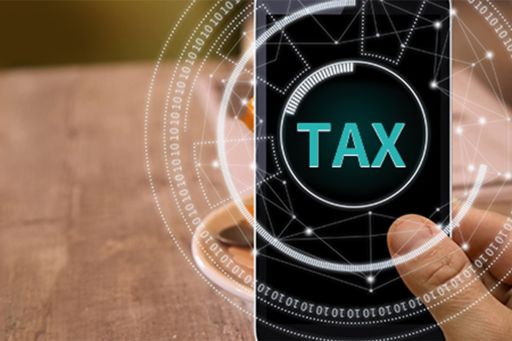Summary
- The Urban Maintenance and Construction Tax (“UMCT”) is a type of local tax which is levied in China by reference to the Value Added Tax (“VAT”) and Consumption Tax (“CT”) payable by a taxpayer. In other words, it is assessed as a supplement to the VAT and CT payable. It is not a creditable tax;
- The Chinese government has enacted the Urban Maintenance and Construction Tax Law of the People’s Republic of China (“UMCT Law”) with effect from 1 September 2021, replacing the earlier provisional rules which had been in place since 1985;
- In the course of enacting the UMCT Law, some changes have been made to pre-existing practices, and some confirmations and clarifications of pre-existing practices have also occurred.
- The most significant changes mean that UMCT is no longer payable in respect of imports of services and intangible assets. However, UMCT is now payable in respect of exports of services.
New Law
The UMCT Law was passed by the Standing Committee of the 13th National People’s Congress on 11 August 2020, and became effective from 1 September 2021.
The Ministry of Finance (“MOF”) and the State Taxation Administration (“STA”) have also issued STA Announcement (2021) 26, MOF and STA Announcement (2021) 27 and MOF and STA Announcement (2021) 28 ("3 Announcements”) to further explain and supplement the UMCT Law. This China Tax Alert sets out the key considerations.
Background
Prior to the enactment of the UMCT Law, the collection and administration of UMCT in China was governed by provisional rules issued in 1985, together with various supplementary tax circulars released subsequently. UMCT is one of the major types of local taxes and surcharges which, together with the Education Surcharge and the Local Education Surcharge, are levied on the basis of indirect taxes payable, including VAT and CT. In other words, UMCT is levied as a type of turnover tax assessed on a base which is itself a tax.
The UMCT provisional rules had been in place for more than 30 years, and since that time there have been significant changes to the indirect tax system in China, including the VAT reform which expanded the taxable scope of VAT to cover a wide range of services that were originally not subject to VAT, and the rolling out of refunds of excess input VAT credits to all general VAT taxpayers. The enactment of the UMCT Law and the release of 3 Announcements have consolidated some of the key UMCT treatments that were previously discussed in the form of supplementary tax circulars, or not clarified.
KPMG observations
We set out below the key highlights of the UMCT Law and the 3 Announcements.
Exclusion of the import of services and intangible assets from taxable basis of UMCT
Perhaps the most significant change brought about by the UMCT Law is the confirmation that UMCT is not levied on the VAT or CT paid in respect of the import of goods and provision of services or intangible assets by overseas entities or individuals to Chinese businesses or consumers.
Before the enactment of the UMCT Law, it was clear that UMCT was not levied on the import of goods. This position was supported by a tax circular (Circular Caishuizi (1985) No. 69) and the position remains the same under UMCT Law. However, the position with respect to the import of services and intangible assets was less clear. As a matter of practice, when domestic taxpayers withheld VAT on behalf of overseas entities in respect of service fees paid or payable to them, they typically withheld UMCT and other surcharges at the same time.
Article 3 of the UMCT Law, MOF and STA Announcement (2021) 28 and STA Announcement (2021) 26 make clear that the taxable basis of UMCT no longer includes VAT and CT paid in respect of the import of goods and provision of services or intangible assets by overseas entities or individuals to businesses or persons in China. This update in the UMCT treatment is welcomed because it reduces the tax costs associated with the receipt of cross-border services by domestic businesses, and also eliminates the need for domestic businesses and overseas service providers to negotiate which party should commercially bear the relevant surcharges.
It is worth noting that the above exclusion does not cover the sale of immovable properties, and therefore it is expected that UMCT remains payable on VAT incurred as a consequence of any transfer or sale of immovable properties in China by overseas entities or individuals.
UMCT treatment on ‘exempt-credit tax amount’
An ‘Exempt-credit tax amount’ is an amount that generally exists for VAT taxpayers conducting export manufacturing businesses or businesses that carry out exports of services, which are subject to an ‘Exempt-Credit-Refund’ VAT treatment. Very simply, it refers to the difference between the ‘Exempt-Credit-Refund’ amount and the actual refundable amount, as computed under the monthly ‘Exempt-Credit-Refund’ returns.
The UMCT position was relatively clear in saying that such amounts form part of the UMCT taxable basis for an export manufacturing business, according to Circular Caishui (2005) No. 25. However, the UMCT position was less clear on whether such amounts incurred by a business carrying out exports of services forms part of the UMCT taxable basis. Before the effect of the UMCT Law, local practices varied in this regard.
MOF and STA Announcement (2021) 28 and STA Announcement (2021) 26, now make clear that the ‘exempt-credit tax amount’ should form part of the UMCT taxable basis. In a practical sense, this increases the local tax costs associated with exports of services and intangible assets.
UMCT treatment on the refund of excess input VAT credits
The amount of refunded excess input VAT credits had been allowed to be deducted from the taxable basis of UMCT and other surcharges according to Circular Caishui (2018) No. 80. This position remains the same after the effect of UMCT Law, but it is helpful to note that this position has been re-affirmed in the UMCT law.
Consistency in taxable basis among UMCT and other surcharges
Finally, while the UMCT provisional rules have now been replaced with the UMCT Law, there is not a similar change observed in respect of the other two major types of surcharges in China – i.e. the Education Surcharge and the Local Education Surcharge. A question therefore arises as to whether the above UMCT positions would be similarly applied to the other 2 types of surcharges.
In this regard, the MOF and STA Announcement (2021) 28 has clarified that the calculation of the taxable basis of Education Surcharge and Local Education Surcharge should be consistent with that of UMCT.
Connect with us
- Find office locations kpmg.findOfficeLocations
- kpmg.emailUs
- Social media @ KPMG kpmg.socialMedia


